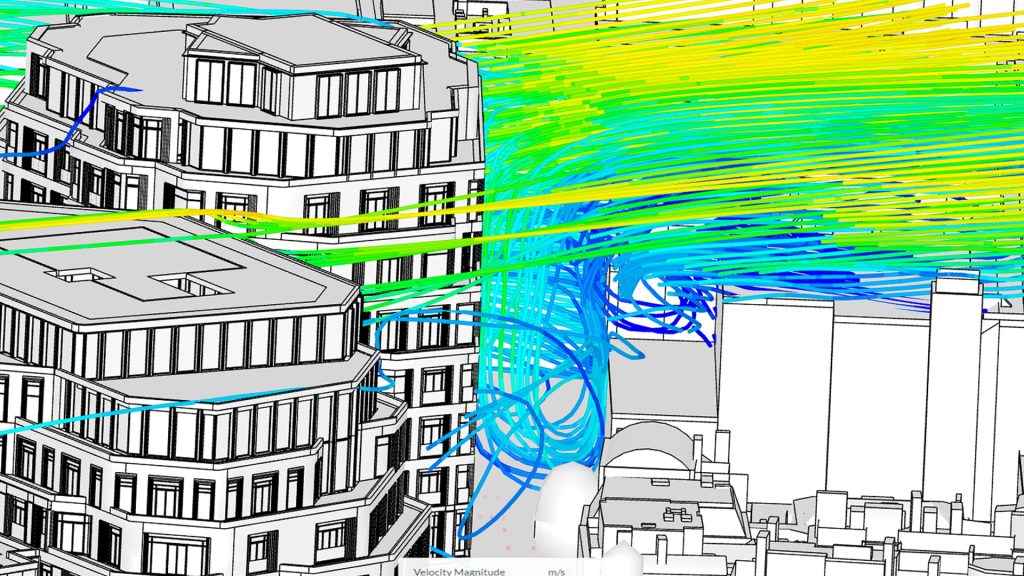Rhino-based ‘Wind Flow’ app, which links to Simscale’s cloud-based simulation platform, designed to make wind and microclimate studies accessible to architects across KPF
KPF’s Environmental Performance team (KPFep) has developed a wind modelling tool for early-stage design studies. The ‘Wind Flow’ app, which utilises the API of cloud-based simulation platform Simscale, is designed to make wind and microclimate studies accessible to architects across KPF.
The Wind Flow app can be used to maximize comfortable spaces with respect to pedestrian wind comfort. It also integrates with outdoor thermal comfort and UTCI calculations, which are critical to KPF’s projects, particularly in hot-humid climates.
Now in beta development, the software is currently used by a handful of architects in KPF’s New York and London offices for competitions and bids, but its integration with Rhino means it will eventually extend its reach to the whole firm.
“Our plan is to deploy this to over 100 architects globally, giving them access to fast and accurate microclimate analysis as and when needed,” said Elias Anka, sustainable design lead in KPF’s London office.
“The aim is to equip our designers with the right toolset and knowledge to tackle climate change and be proactive in designing carbon neutral buildings and cities that prioritize the comfort and wellbeing of occupants.”
With the Wind Flow app, Pedestrian wind comfort (PWC) and building aerodynamics studies take just a few minutes to simulate. From within Rhino, users can quickly select the climate data/location and the number of wind speeds.
A series of dialog boxes appear in turn for architects to configure a wind study. The simulation is then sent to SimScale in the cloud to run, delivering simulation data such as probe point coordinates, result planes, and wind speeds. The results are imported back into Rhino for visualisation.
Simscale uses the Lattice Boltzmann Method (LBM) solver Pacefish which, acording to Simscale, makes it robust when importing complex CAD models. The geometry does not need to be ‘water-tight’, and what used to be classified as ‘imperfect geometry’ for simulation purposes can be worked with directly in SimScale.
The KPF Rhino app has an active development roadmap. Future plans include different types of analysis and new powerful plugins for designers, such as outdoor thermal comfort, natural ventilation studies, and possibly moving to more indoor environmental analysis.
Caption: A new build project in London. The coloured streamlines show an incident wind from the right. The building has been simulated in a virtual wind tunnel using SimScale. Courtesy of KPF and SimScale.






